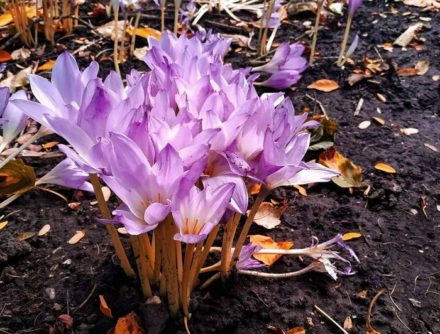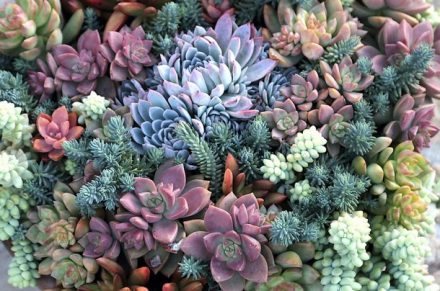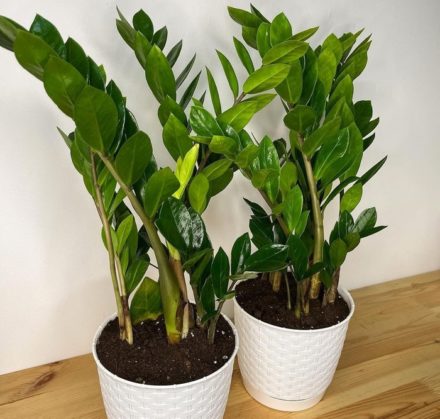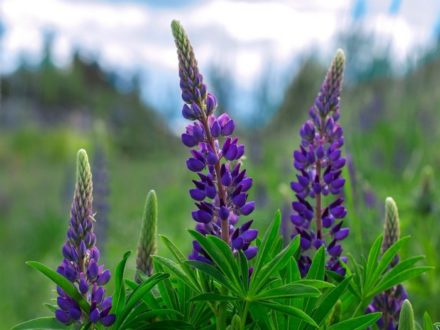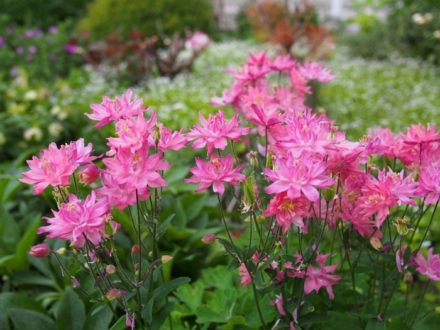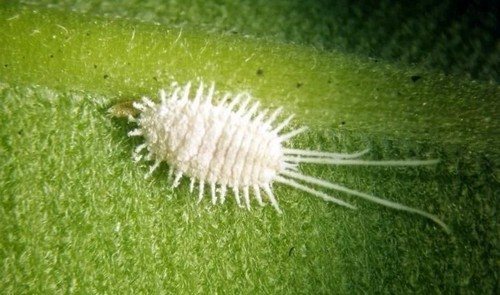Greening of living space is the way to create coziness and a comfortable environment. Flower pots enliven the interior and purify the air - that is why they are so popular in apartments and private houses. Often, fans of home flora are faced with unpleasant situations, including plant diseases and the appearance of pests. One of the most dangerous problems of indoor floriculture are midges in flowers.
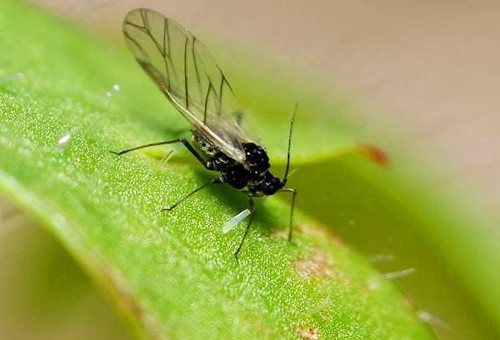
Causes of the appearance of flower midges
If midges have appeared in your flower pots, indicate what exactly caused their appearance. This is important for the correct fight against harmful insects. So, midges can appear under the following conditions:
- too frequent watering of the flowerpot;
- organic liquids (for example, tea) were used for watering;
- the soil was contaminated before purchase;
- low-quality soil was used, containing a large number of undecomposed leaf particles;
- the flower was transplanted into a pot that is too large - the lower layers of soil accumulate liquid, causing over-moistening of the entire soil;
- some indoor pests get into the room simply by flying in through the window.
Types of midges
Among harmful small insects, two types of midges predominate - white (whiteflies) and black (fungus gnats). More harm is caused not by adult individuals, but by larvae, which can cause irreparable damage to the plant.
White
Whitefly or pore is a white or yellow-brown insect, about 1 mm in size. It is found in damp, warm rooms, more often in winter, when water does not evaporate as quickly.Adults do not cause much harm - all the danger lies in the small larvae that eat the leaves from the underside.
Black
Fungus gnat or sciarid is a small black insect, harmless to humans, but dangerous to indoor flowers. Sciarid larvae compact the soil and also eat the roots, which is why the plant takes on a "crumpled" appearance.
Fungus gnat appears when organic waste is improperly fertilized, for example, with tea leaves or eggshells.
Other pests
In addition to porugs and sciarids, flowers are attacked by other, no less dangerous insects. Among the common pests of indoor flowers are:
- Thrips (bladder-legged) - insects 1-2 mm long. Thrips have an elongated shape, adults are gray-brown in color, larvae are yellow. Thrips reproduce quickly, laying eggs in leaves and buds. Insects feed on the rhizome.
- Aphids are small insects 1-2 mm long. Aphids can be green, as well as brown, red, black or yellow. Their main diet is young shoots and buds. With their proboscis, aphids pierce the surface of the leaf shoot and suck out the juice.
- Red spider mites (spider mites) are insects of a characteristic red color. They appear on plants located in a dry, unventilated room. When affected by the mite, the flowers become pale, the leaves gradually dry out and fall off.
- Scale insects (shield aphids) are easily recognized by the presence of a removable shell. Scale insects feed by tightly adhering to leaves and stems, causing irreparable damage to indoor plants. Mealybug is a pest whose shell is covered with a white dusty coating. It is possible to detect the mealybug only when there is a large accumulation of it.Adults do not cause any particular harm - all the danger lies in the small larvae that eat up the leaves from the underside.
- Black
Fungus gnats appear when improperly fertilized with organic waste, for example, tea leaves or eggshells.
Other pests
In addition to pords and sciarids, flowers are attacked by other, no less dangerous insects. Common pests of indoor flowers include:
Thrips (vesicles) are insects 1-2 mm long. Thrips have an elongated shape, adults are gray-brown in color, larvae are yellow. Thrips reproduce quickly, laying eggs in leaves and buds. Insects feed on rhizomes.
Aphids are small insects 1-2 mm long. Aphids can be green, but also brown, red, black or yellow. The main diet is young shoots and buds. The aphid pierces the surface of the leaf shoot with its proboscis and sucks out the juice.
Red spider (spider mite) are insects with a characteristic red color. Appear on plants located in a dry, unventilated area. When attacked by a mite, the flowers become pale, the leaves gradually dry out and fall off.
The mealybug is a pest whose shell is covered with a white dusty coating. It is possible to detect a mealybug only when there is a large concentration of it.
Osteospermum for seedlings: 5 useful tips for growing a flower
What flowers do midges most often appear on?
Midges do not appear on all flowers. Flowers with soft stems and leaves, which are characterized by prolonged flowering (for example, violets, adiantums, achimenes, koleria, begonias, roses, orchids) are most susceptible to attack by harmful insects. With prolonged damage by flower midges, the plant withers and dies.
Ways to get rid of midges
To begin the fight against flower midge, it is necessary to determine its type and eliminate the causes of its appearance. Before you begin to directly destroy harmful insects, deprive them of suitable living conditions - drain the soil or replace it altogether. After this, choose any method of dealing with midges.
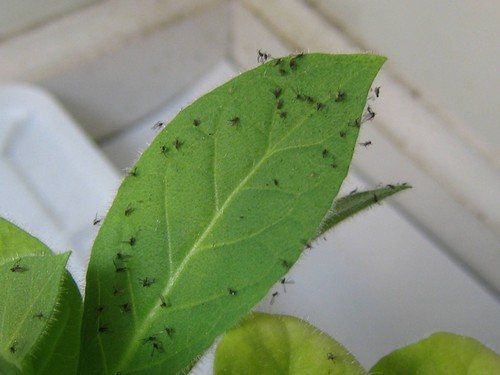
Chemicals
Chemical agents are suitable in advanced cases, when the number of harmful insects cannot be corrected in any other way. Choose products for exterminating midges based on their sensitivity to chemical components. Most often used:
Dichlorvos: Raptor, Raid, Heo.
An effective way to get rid of harmful insects. To exterminate pests, the preparations contain permethrin and cypermethrin. When working with dichlorvos, remove children and pets from the room, avoid spraying the substance on the leaves and shoots of the plant, carry out the treatment indoors, and then ensure good ventilation.
Solutions and liquids: Fitoverim, Inta-Vir, Kinmiks, Actellik.
Such preparations are sprayed directly on the leaves and shoots, as well as around the flower - on the windowsill, window, stand.Before working with a chemical solution, test it on a small leaf or other part of the plant to avoid burns. Also remember that after using a chemical solution, you cannot water the flowerpot for at least three to four days.
When using chemical means to kill harmful insects, create “toxic greenhouse” conditions - spray the chemical on the surface of the soil or leaves and cover the plant with a plastic bag for 5 hours.
Important! When using chemicals, it is important to study the instructions and adhere to safety precautions - wear gloves, avoiding contact of chemicals with the skin of your hands, as well as with your nose, mouth and eyes.
Folk remedies
Folk remedies for getting rid of annoying flower midges are safe for humans and do not require large financial expenditures. Many of them include improvised means available in every person’s home:
Spathiphyllum - 151 photos of different types and varieties, care at home
Potassium permanganate solution.
This solution will help get rid of white and black midges, as well as fungus. Dilute potassium permanganate with water until slightly pink. With a strong concentration of the solution, the root system of the plant will be damaged.
Citrus peels, dill sprigs, garlic.
Most pests do not tolerate strong odors, such as citrus fruits, dill or garlic. It is enough to stick a couple of cloves of garlic, orange peel into the soil of the affected plant, or spread a couple of sprigs of dill on the surface of the soil. You can also prepare a special solution: pour boiling water over three heads of garlic, leave the resulting liquid to brew for 4 days. You need to water the ground with this solution and spray the leaves.
Many types of flower midges cannot tolerate sulfur, so regular matches can help get rid of pests. Stick a few matches, heads down, into the soil of the affected plant. After a day, if the sulfur has disappeared, repeat the procedure. In one to two weeks, all adults, as well as larvae, will die out.
Wood ash.
This is a mineral fertilizer used to deoxidize the soil. Distribute the ash in an even layer over the entire surface of the soil of the diseased plant and reduce watering.
Important! This method is not suitable for flowers growing in acidic soil.

Tobacco dust.
Another fertilizer that can help control harmful insects. Tobacco dust can be purchased at any gardening and floriculture store. Spread the fertilizer on a windowsill or flower stand.
Laundry soap.
Water the affected plant with a mild soap solution and wipe the stems and leaves with it.
Strong Bacopa Seedlings: 5 Helpful Growing Tips
Low temperature.
If a houseplant can favorably tolerate temperatures of about 15 degrees, just leave it in such a cool place for one to two weeks. Midge larvae cannot tolerate low temperatures.
Vacuum cleaner.
You can collect adult insects using a vacuum cleaner. After the procedure, change the dust bag.
Insect traps
Sticky traps.
There are two types of such traps: store-bought and home-made.The smell of poisonous glue on commercial traps attracts not only flies or mosquitoes, but also flower gnats. To make such a trap you will need cardboard and any sticky, pleasant-smelling substance (honey, jam, sugar syrup). Such traps should be changed as midges accumulate and the sticky liquid dries. The signal for the end of the fight will be empty traps.
Saucer with syrup.
Such a trap should be placed near the affected flower and changed as the spoon fills with midges.
Apple vinegar.
- A trap using apple cider vinegar is very simple to make: take a glass jar, pour apple cider vinegar into it, close the lid, and make several small holes. The midges will flock to the smell of vinegar, enter the jar through the holes, and will not get back out. If you don't have apple cider vinegar at home, use another one, adding a couple of pieces of fruit or a couple of drops of strong-smelling dishwashing detergent.
- Tea brewing.
- Take a yogurt jar or glass, cover it with cling film, and use a needle to make several small holes in it. Pre-fill a glass or jar with tea leaves. Midges will flock to the smell of tea leaves.
- Strong seedlings of silver cineraria from seeds: 5 useful tips for growing
- Fruits.
- Place a couple of fruits (preferably overripe) in a plastic or plastic bag, wait until the midges flock to the bait. Close the bag and take it out of the apartment.
- Important! All of the above traps are applicable only to combat adult insects.
- Prevention measures
- To prevent the appearance of flower midges, you need to follow certain rules, namely:
Regulate the intensity of watering, especially in the cold season, when moisture evaporates from the soil rather slowly.


